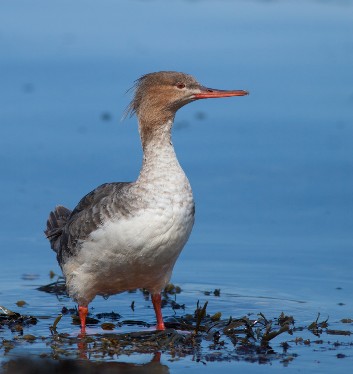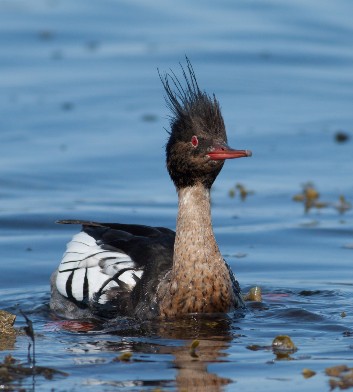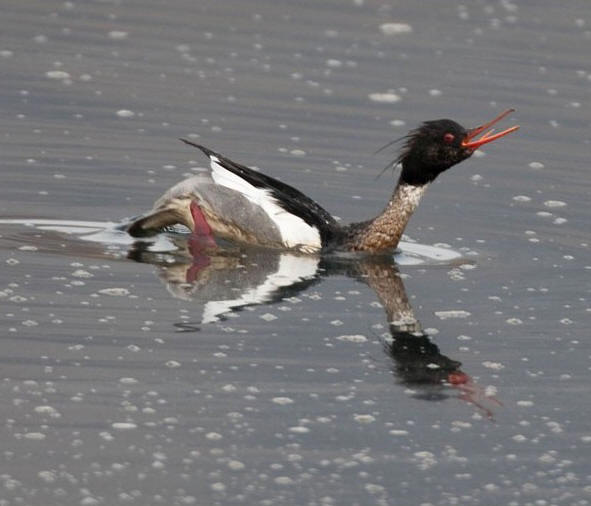Red-breasted Merganser on Arran
Reports


These familiar and distinctive ducks are a feature of Arran’s coast. The streamlined Red-breasted Merganser is a handsome bird. They fly rapidly, and feed by diving from the surface to pursue aquatic animals underwater, using serrated bills to capture slippery fish. Red-breasted Mergansers have a spiky crest and long thin red bill with saw-tooth edges. The male has a dark head with a green sheen, a white neck with a rusty breast, a black back, and white underparts. Adult females have a rusty head and a greyish body. Juveniles look similar to females but lack the white collar and have smaller white wing patches.
Red-breasted Merganser breed across North America south to the Great Lakes, in northern Europe south to Britain and northern Asia south to northern China. In winter the more northerly birds move south. In Scotland Red-breasted Merganser are found
predominantly in shallow coastal waters, feeding on small fish and crustaceans. Most of the Scottish population breeds on sheltered sea lochs and estuaries but some nest inland on lower reaches of rivers and on large freshwater lochs and reservoirs. In winter the resident Scottish birds are joined by immigrants including a major proportion of the Icelandic breeding population and some birds from Fennoscandia.
According to the British Trust for Ornithology’s Wetland Bird Survey, Arran is a site of national importance for Red-breasted Merganser. It is a breeding bird common around the coast all year. Their gregarious courtship display is a delight to see. Courting males salute females with head held high and then they curtsy to the females by tipping up and putting their rear in the air with bill pointing to the sky. After the breeding season groups of over fifty moulting birds are not unheard of. Last year I received two hundred and seventy-seven records from one hundred and three locations on Arran.
The Goosander is a similar saw-toothed duck. On Arran it is much less numerous than Red-breasted Merganser. This video produced by the British Trust for Ornithology shows the identifying features of Goosander and Red-breasted Merganser. Click.
